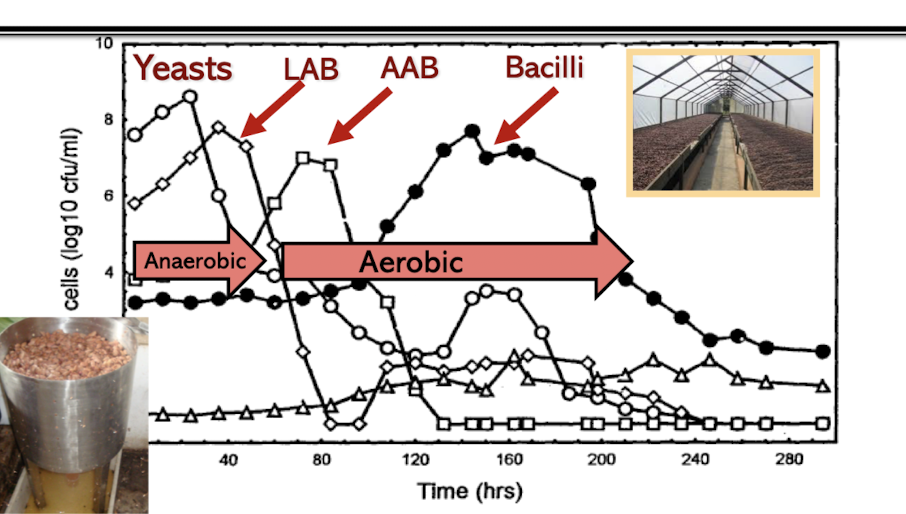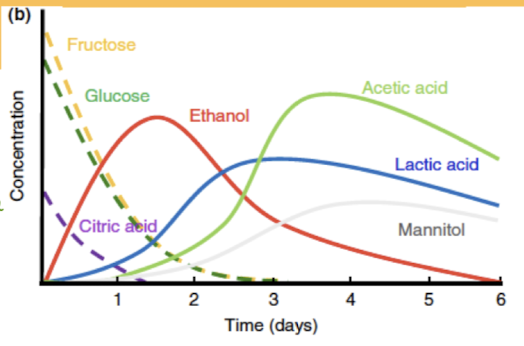Chocolate and Coffee Fermentations
1/9
There's no tags or description
Looks like no tags are added yet.
Name | Mastery | Learn | Test | Matching | Spaced |
|---|
No study sessions yet.
10 Terms
“Sweatings”
Fermented juice (made up of ethanol and acid) from the (sugars in the) mucilage (ethanol and acetic acid liquid pooped out)
Pectinases break long sugar/protein chains that hold moisture and break it to release the liquid
We need to do this to dry them out
“Cut Test”
To check if bean has been fermented long enough, color
Considerations for Flavor - Fermentations
Drying and roasting have largest effect on flavor than fermentation
Why is this different from other fermentations?
Fermented substrate is not consumed
Microbial Stage in Cocoa Ferments
Yeasts —> Ethanol peak
LAB —> Lactic acid peak (from flies)
Acetic acid bacteria —> acetic acid peak (aerobic) and temp peak
Eat the ethanol from yeasts

Metabolite Succession
Glucose and fructose main sugars
Citrate also consumed early on
Ethanol (alcohol) seen FIRST
Mannitol from fructose, to combat acidic environment

Graham Fleet
Yeasts contribute to essential for proper flavor
He fermented chocolate in presence of yeasts and bacteria and addition of natamycin (anti-fungal)
People didn’t like yeastless (antifungal) fermentation
For LAB nisin (antimicrobial, bacteriocin) and lysozayme (bursts open cell)
When bacteria was absent people liked it more
Coffee Process
Different: wash/clean cherries, uses an inoculant, and uses dry or wet processing
Wet processing uses fruit without skin and part of pulp
Why do a Coffee Bean Fermentation?
Fermentation goal —> mucilage is degraded whole fruit is dried to low moisture
Fermentation microbes produce enzymes that depolymerize and hydrolyze the pectin in mucilage
Removiung mucilage facilitates drying and produces metabolites that go into interior of the coffee bean
Can prevent problematic fungi such as ochratoxin producers (like cassava)
Microbes and Terroir
Microbial makeup will be different based on where the fermentation happened